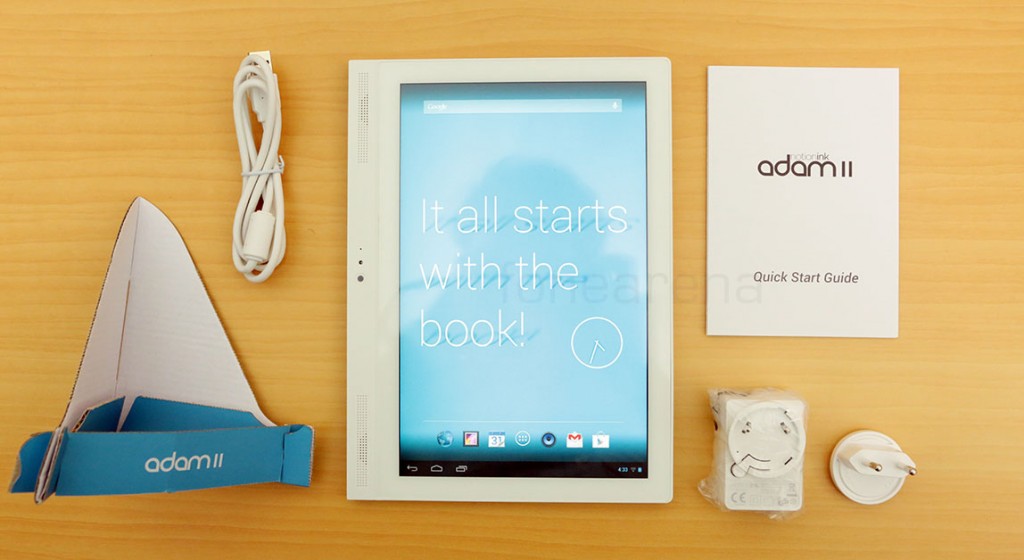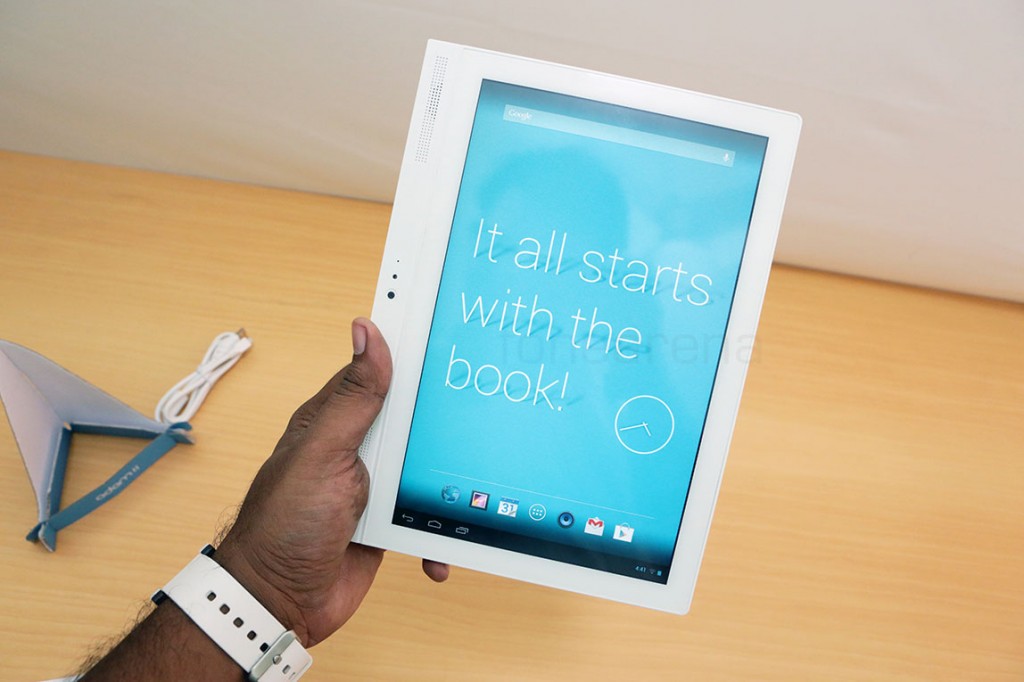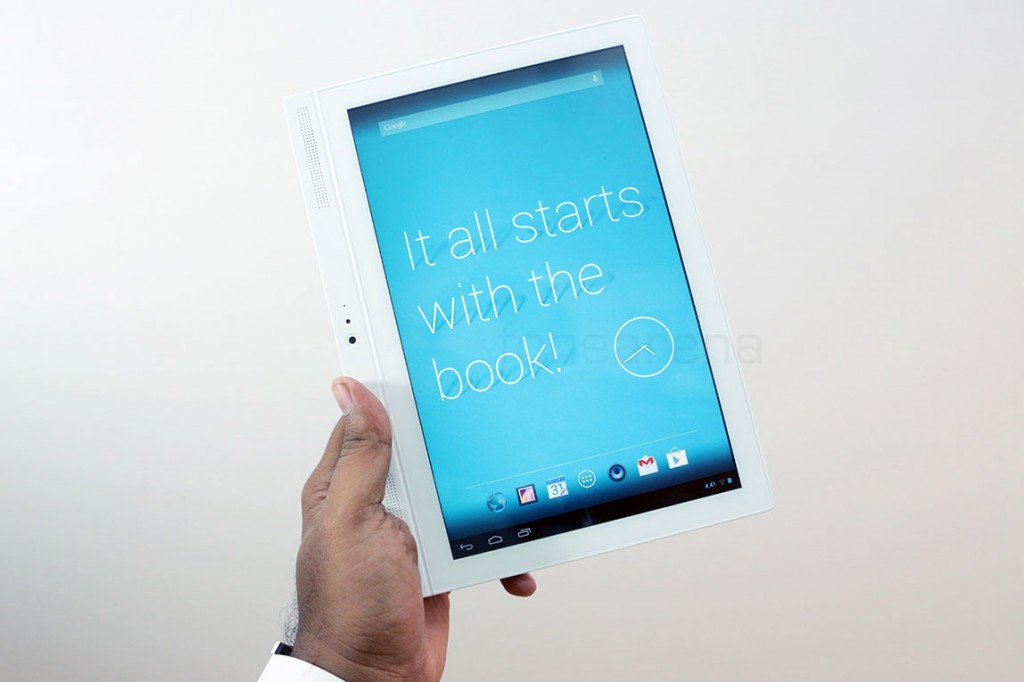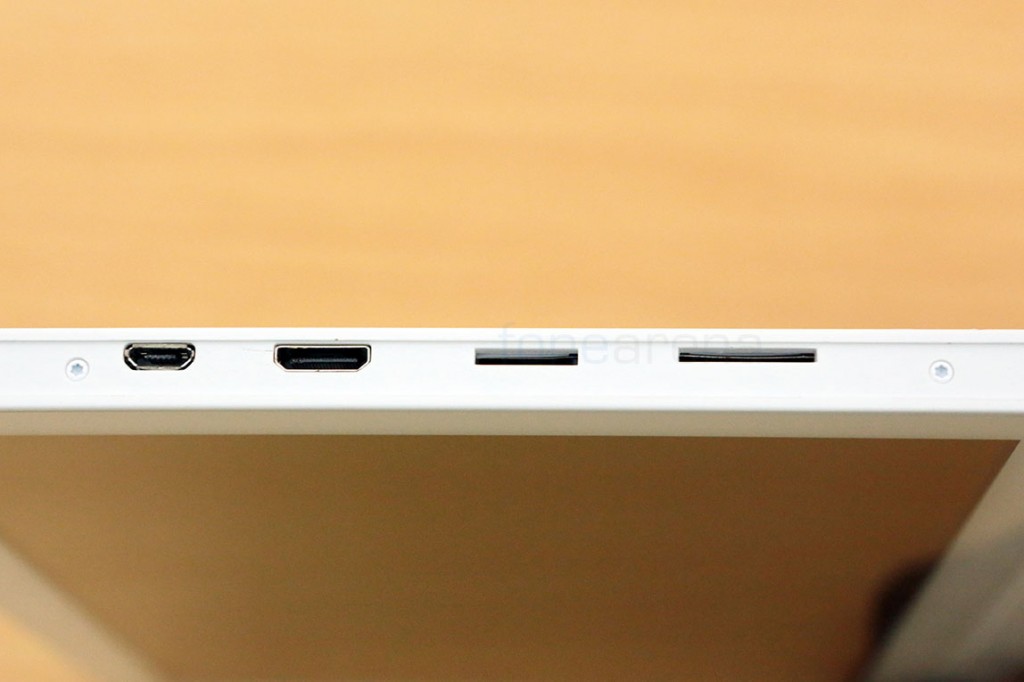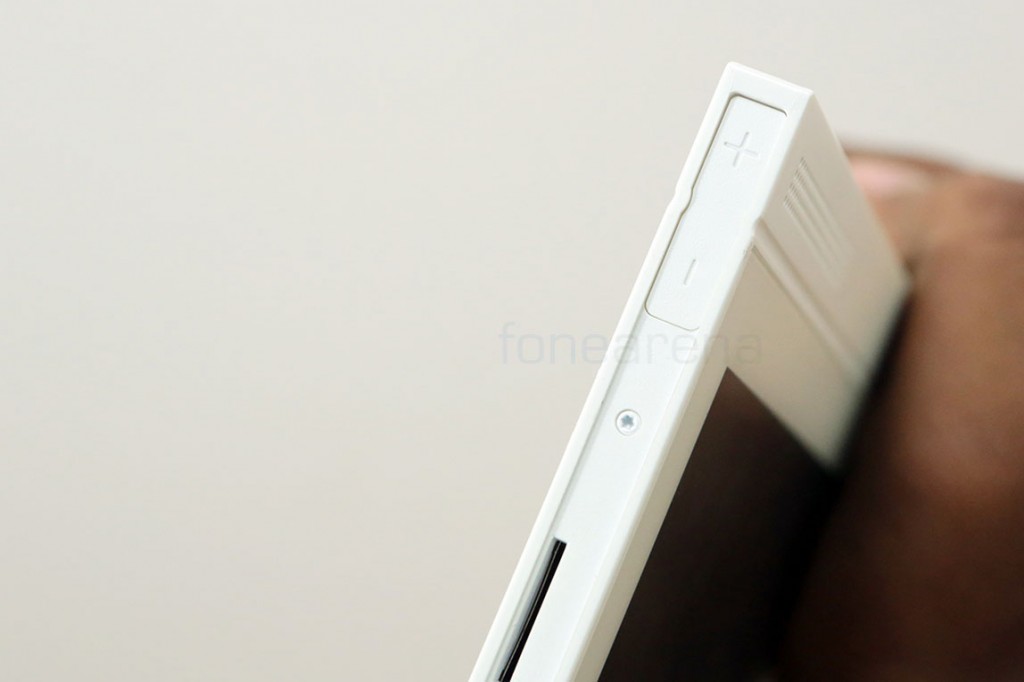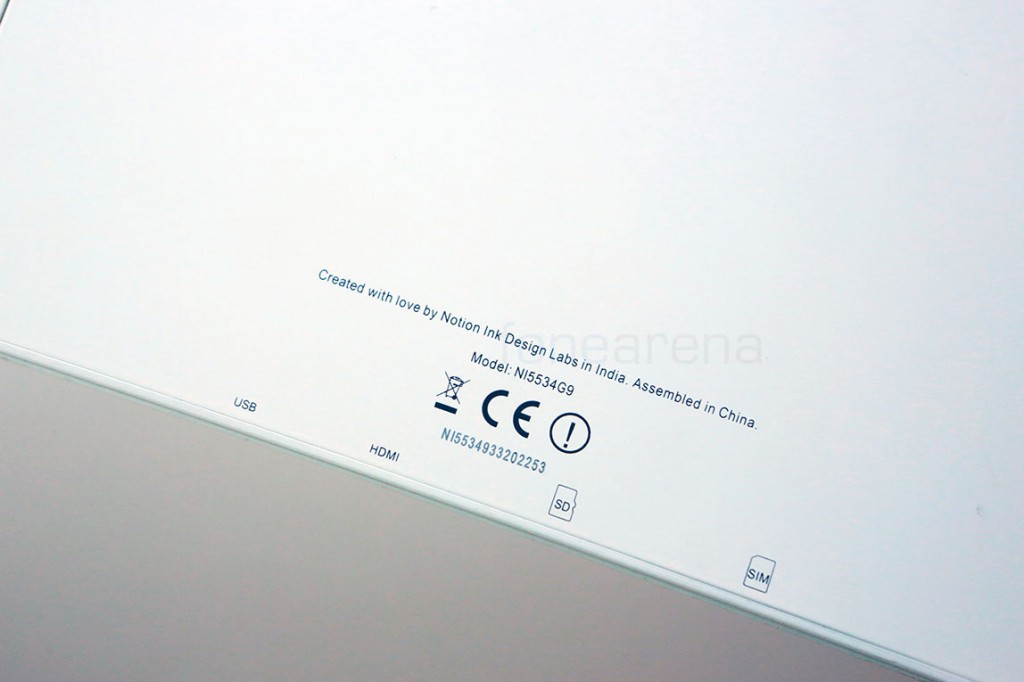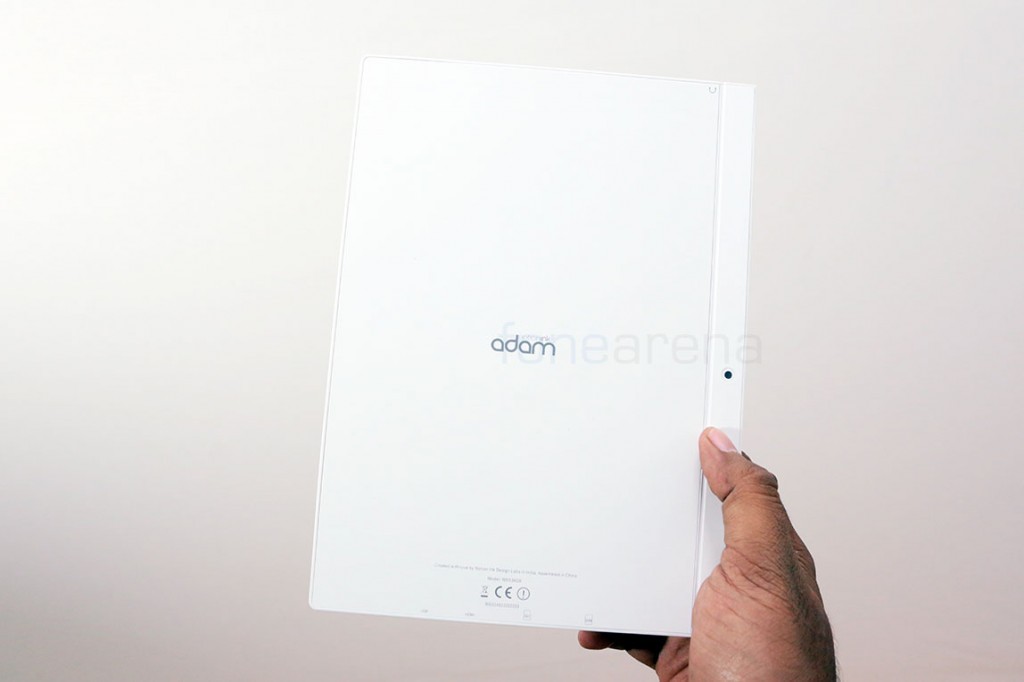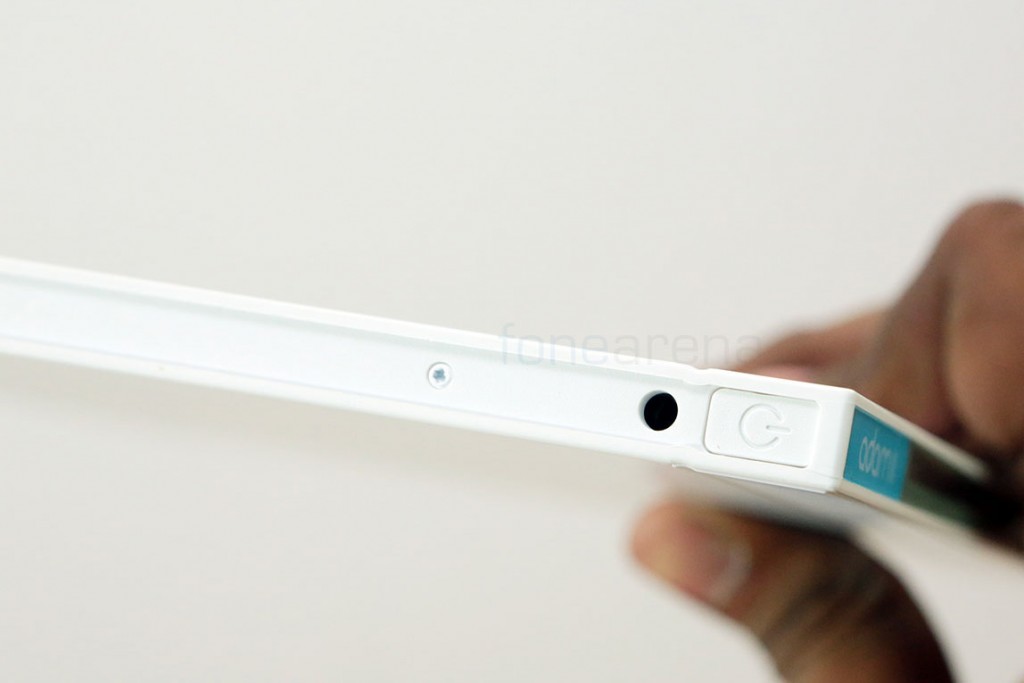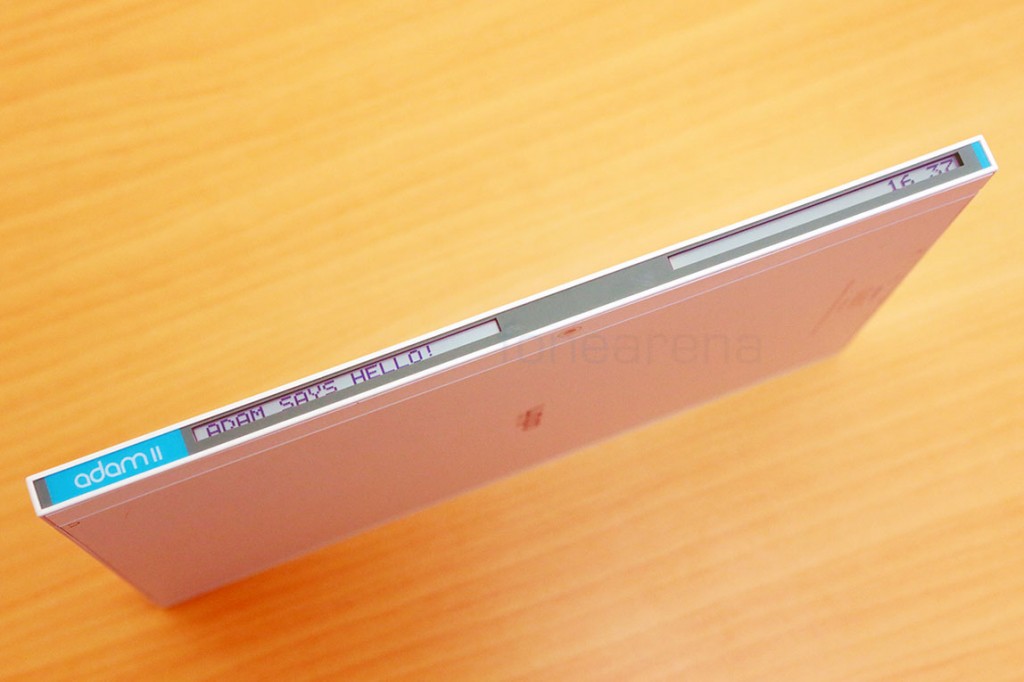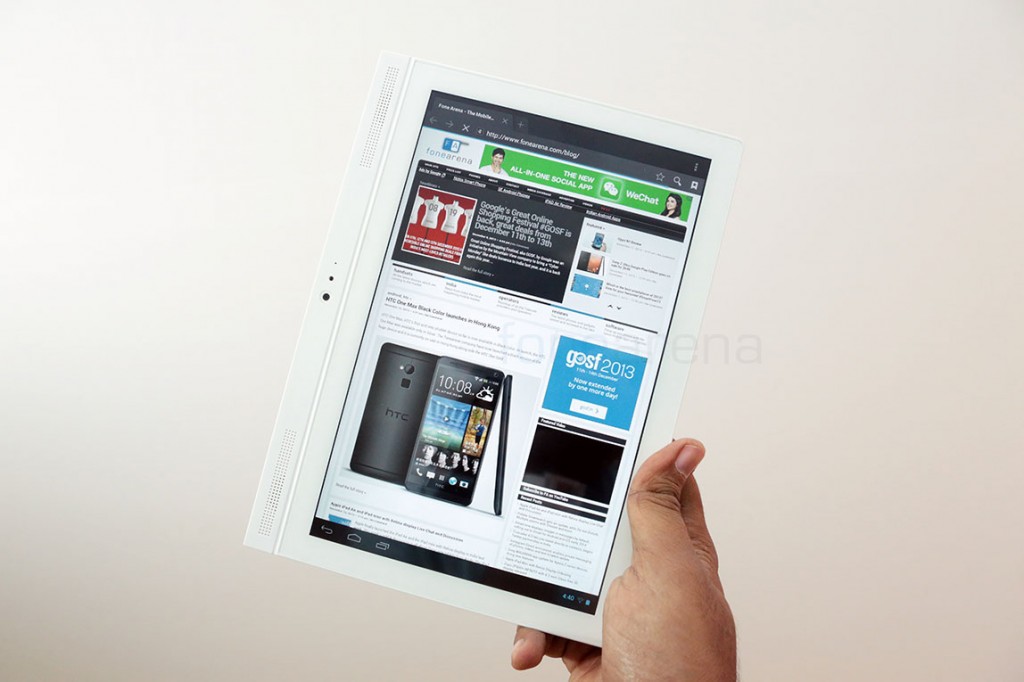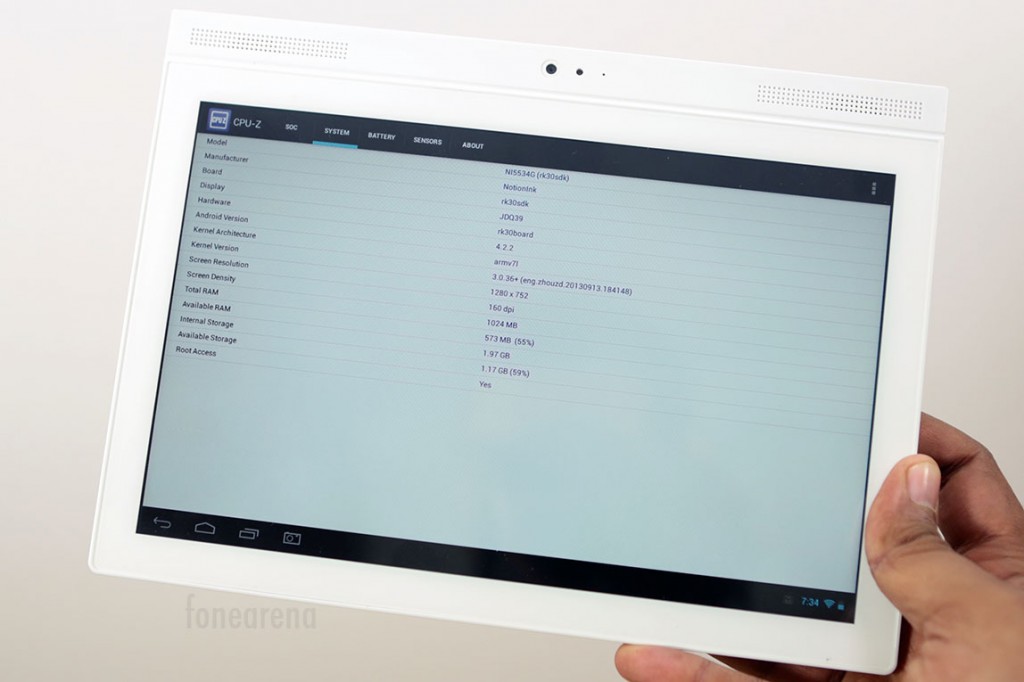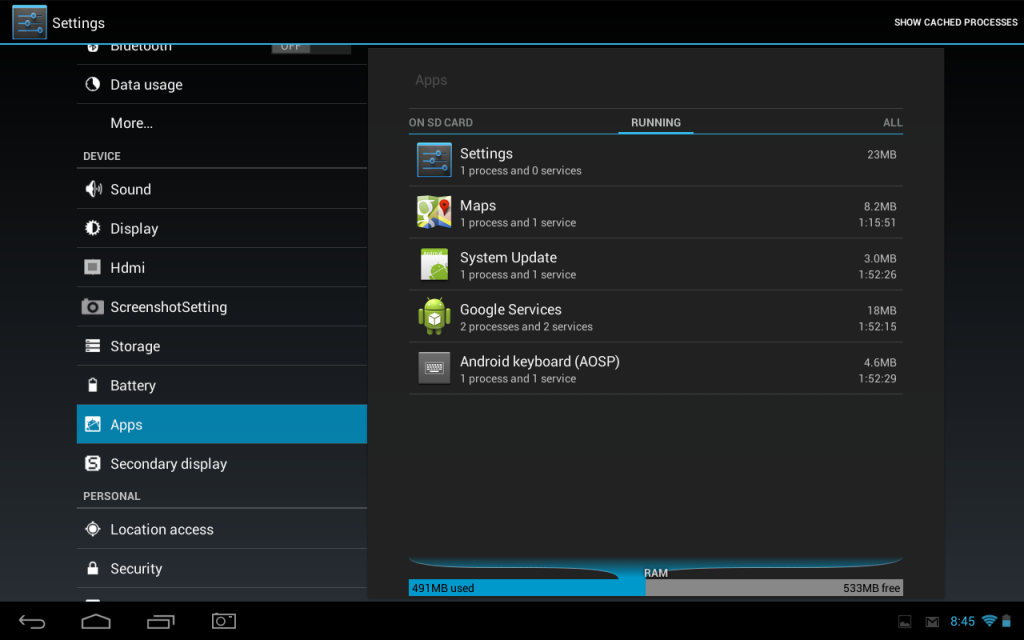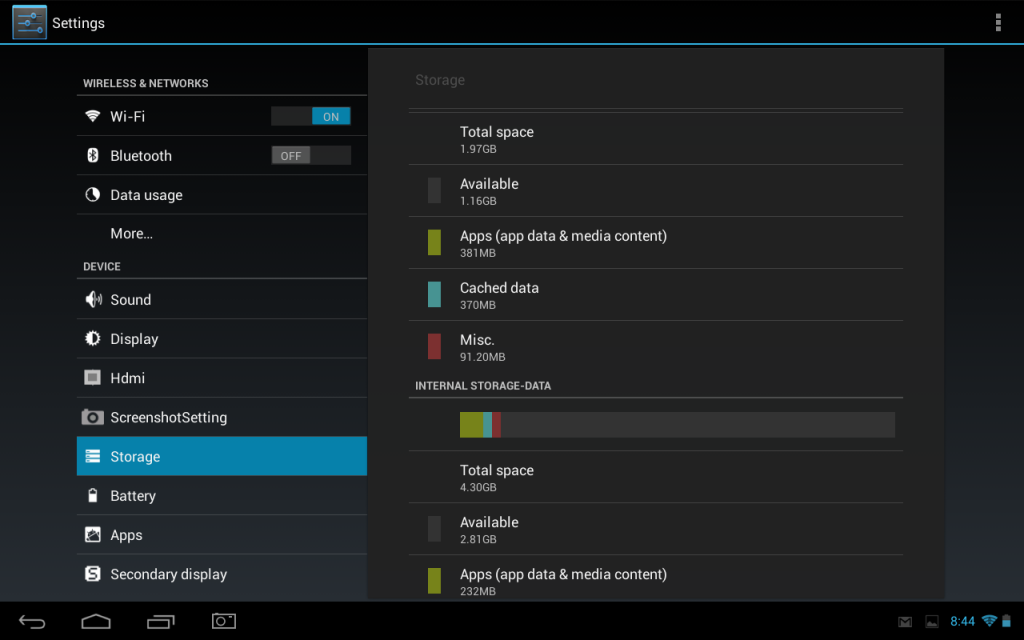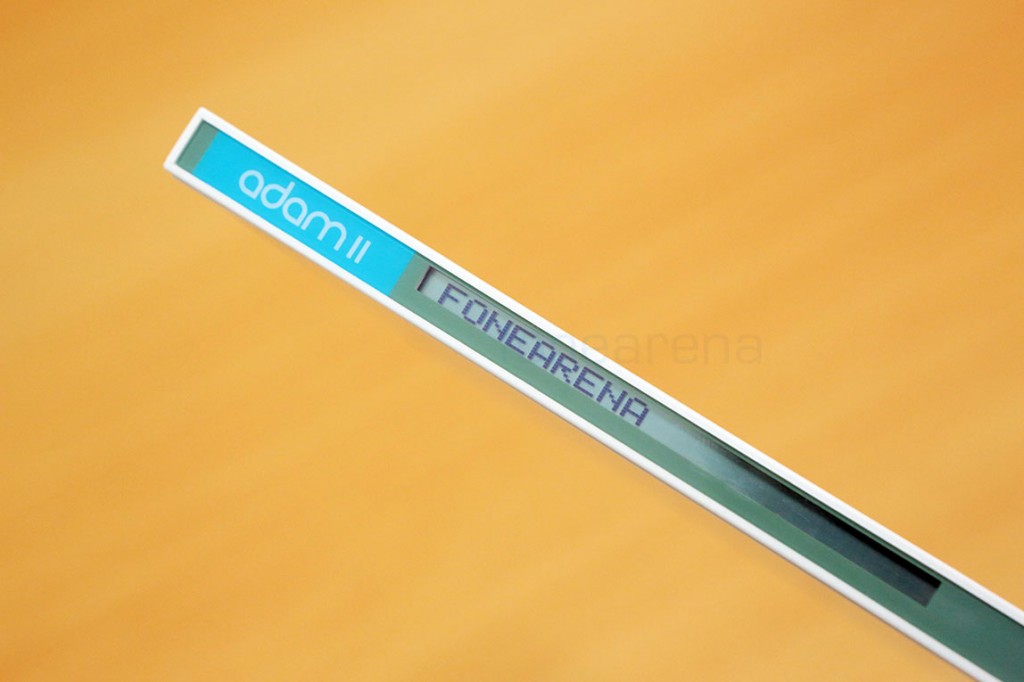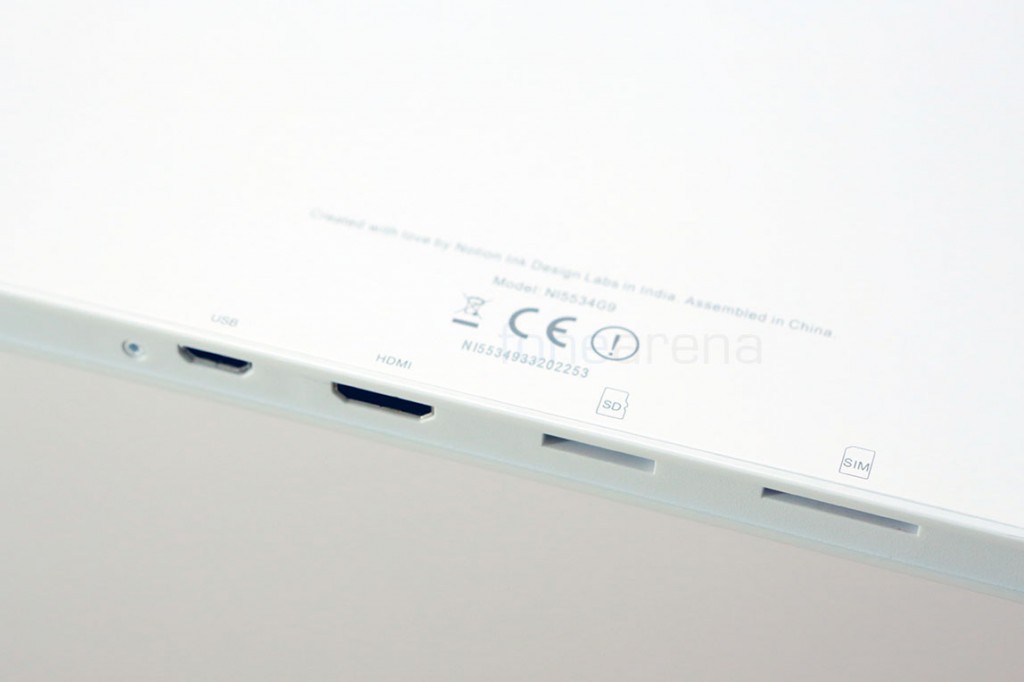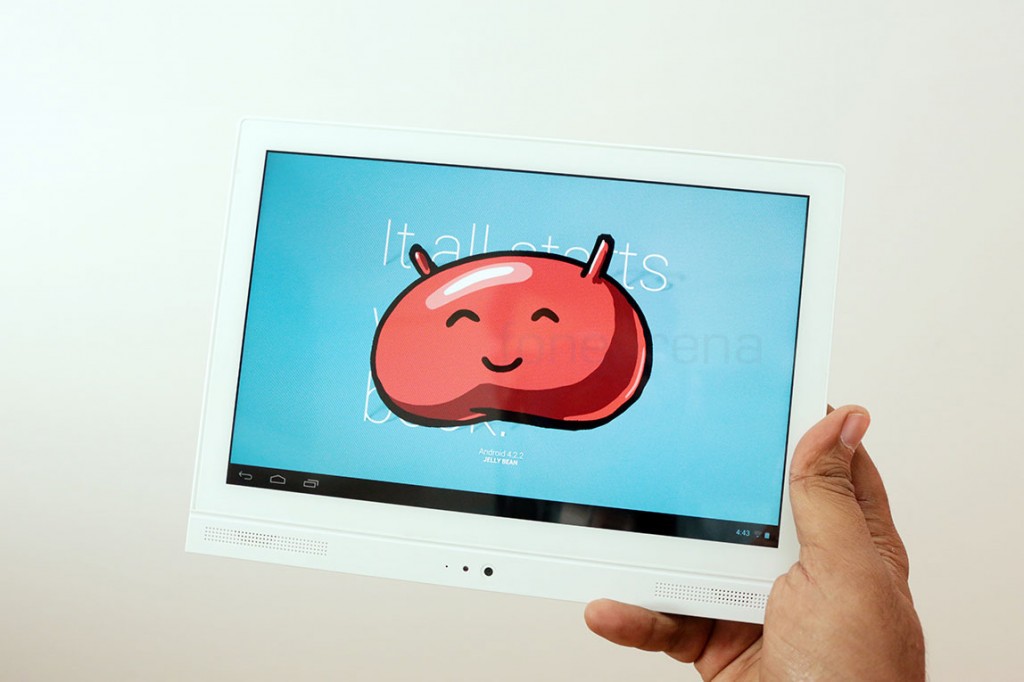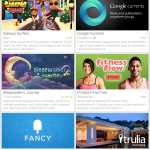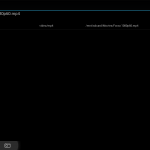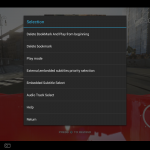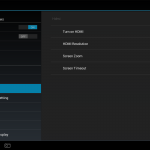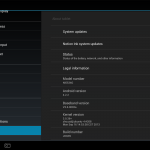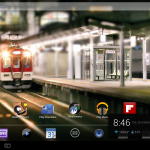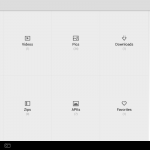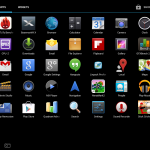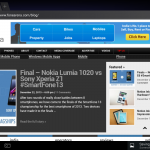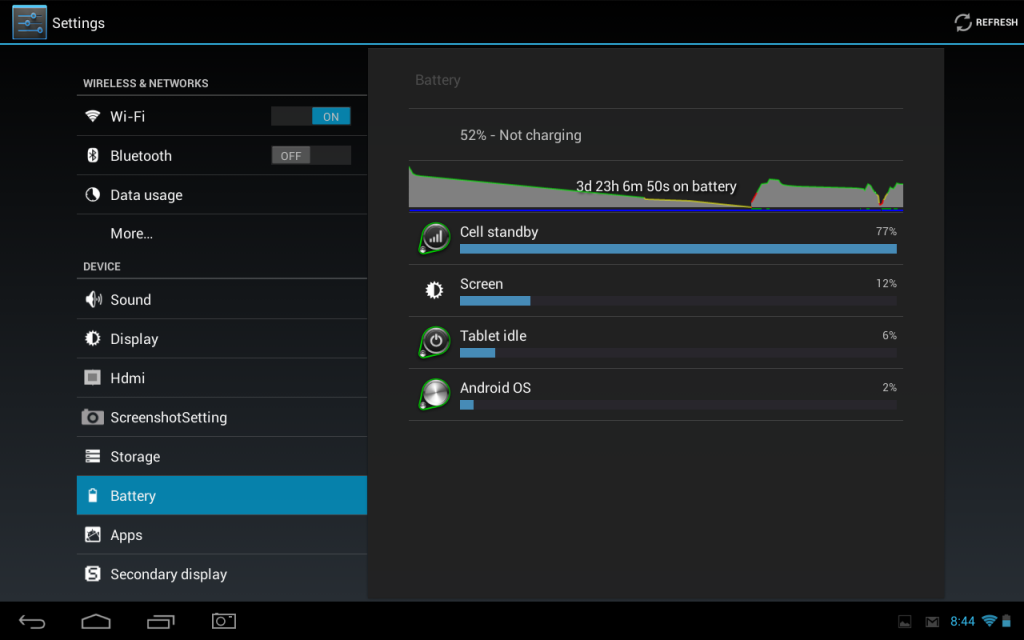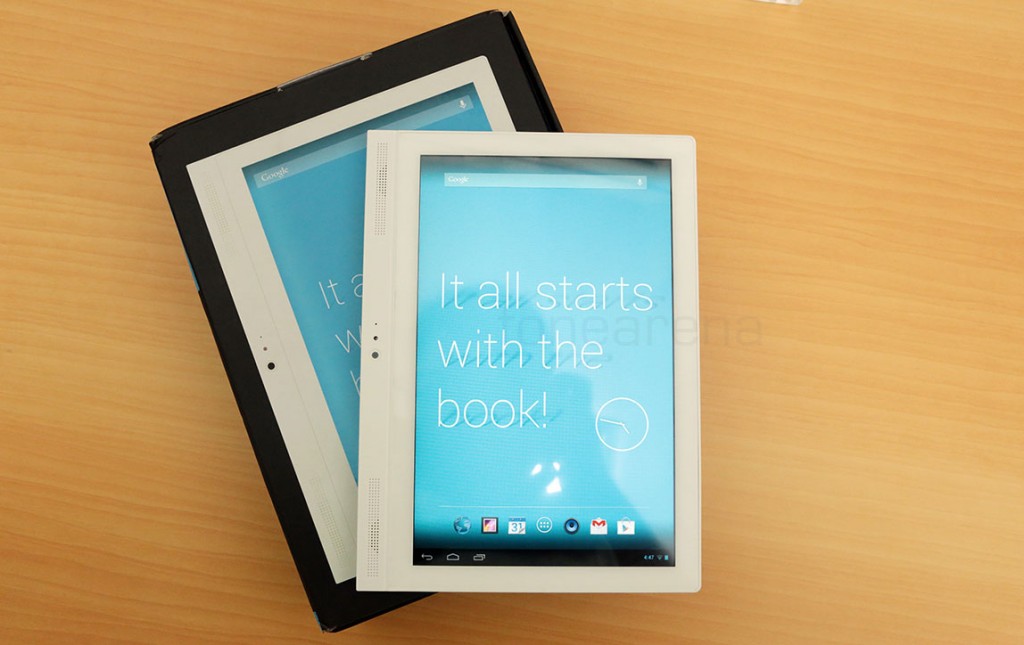Notion Ink is a name that most of us remember for various reasons. Some of us remember it for the innovative wannabe product, a world’s first Tegra 2 chipset on board with an innovative Pixel Qi dual mode display and a rotating camera, that too way back in 2010 when Android 2.1 was doing the rounds. Some of us remember it for the lengthy delays in production and the overall failure to meet expectations due to sub standard retail hardware and experience. Suffice to say, it was deemed a failure.
But the company is now back with another product, the Notion Ink Adam II which was recently released in India for a starting price of Rs. 16,499. We had unboxed it a while back to find out if the device redeems itself from its predecessor’s failure. We were initially impressed, but now after about a week of usage, is the Notion Ink Adam II really worth our time and money? We find out in our full review.
Video Review
httpv://www.youtube.com/watch?v=mj0GZ2cE63U
Unboxing
The Adam II comes with a big box with minimal number of components. A surprising addition was the DIY kick stand made of card board, here are the box contents laid out in a single picture –
- Tablet – Notion Ink Adam II
- Wall charger – with Indian plug
- Micro USB cable
- DIY cardboard Kick Stand
- Quick Start guide and info on how to make the kick stand
- Cleaning cloth
You can take a look at our complete unboxing and first impressions post for an idea of how we felt at first look.
Design, build and ergonomics
The design of the Adam II is refreshing. It is very clear that the company’s message is to make it look like a book, with large bezels on the left hand side when held in portrait. The logo on the back reads in portrait and the box itself was printed in portrait orientation. Coming to the actual use, this design actually makes for a comfortable hold and a very text book like form factor. To match the look, the company even has added a secondary display on the spine for at a glance information. More on that later.
Predominantly made of metal, the build quality is very premium, and naturally is one of the stand out factors of this device. Not many curves exist on the sides, so the flat look creates hard edges. The plastic material used for the buttons too is of good quality and they provide good feedback when pressed but weirdly, they are comfortable to use only in landscape meaning, they are easily accessible in this orientation. The back is completely flat, so it easily picks up scratches and dirt if you are careless, so it is best that you buy a stand in case you are considering this device.
Talking of handling, as we said earlier, due to the hard edges, it’s kinda hard to hold it for longer times in the landscape orientation while we felt it is slightly better in portrait. Coming in at 584g of weight, this also comes as a factor that affects regular usage. It is not too heavy, but again, the hard edges don’t help. This got us thinking whether the form factor itself is in question here. We personally feel that a smaller form factor, like that of a 8 inch device suits this design better, mainly because the device is too cumbersome and impractical to use in landscape as well as portrait which is the way it is primarily intended to be used. Overall, this is a very well designed and built device which we would like to see in a smaller form factor.
Hardware Walkthrough
“It all starts with the book” says the default wall paper. We see what Notion Ink’s going for here, with regards to the design philosophy and we like it, despite us wanting a smaller form factor of this.
The tablet, meant to be held in portrait, has a large bezel on the left, which packs stereo speakers. the 3.2 MP front facing camera and a microphone, primarily used for video calls. The display is a 10.1 inch IPS LCD panel with a 1280×800 resolution and is covered by the Asahi Dragontrail glass. It is highly reflective and a finger print magnet too.
When held in landscape, these components make more sense, or rather feel familiar. As you can notice, the tablet is fully white, making it coherent and minimalistic in design. We really like the grilled speakers and its symmetric placement. Considering this is a tablet meant to be held in portrait, lets go by that orientation for the hardware walk through.
The right side(or the bottom, in landscape) is empty but there are a lot of connectivity options at the bottom(or left, in landscape).
You have the (from left to right) micro USB slot with OTG support, mini HDMI port for display out, a micro SD card slot for adding upto 32 GB of memory and finally, a SIM slot for data connectivity. You can also notice the screws right here on the side, may be it’s easy to open the tablet.
You also have the volume rocker sitting at the edge of the same side(left, in landscape and bottom, in portrait).
You can also notice that this tabled is “Created with love by Notion Ink Design labs in India, Assembled in China”. Yes, the company is based out of Bangalore and is responsible for the conception and design of this product, while it is assembled in China, much like most of the electronic products these days.
The back, which is flat and minimalistic, sports the Notion Ink Adam logo and also the secondary rear camera on the right. The metallic build is marvelous and is just a sight to behold. It looks way better than how it looks in the photos.
Over at the top, we have the power/lock switch and the 3.5mm audio jack.
Over at the left, we have the spine of the device which also sports a two-part LCD screen. This is always on, even when the device is turned off, and acts like a text book’s label. You can configure the message it says on the left and it displays the time on the right. Of course, this works great for at-a-glance information, hence notifications can be configured to be displayed here. A nice little touch, but works great if you just want to see if you have any notifications without turning on the screen, and put the tablet aside. As mentioned earlier, you can configure a custom message from inside the settings to make it show what ever you want.
Display
One of the prized additions to the Notion Ink Adam was its Pixel Qi transflective LCD screen that turned a lot of heads. It could have dual modes, with backlight on or off, but the successor loses this innovative screen, unfortunately. Here, in place of the Pixel Qi is a 10.1 inch IPS LCD screen with a resolution of 1280×800. With such a low resolution for a 10.1 inch panel, it measures only 150 ppi of pixel density. This is very low for a 10 inch tablet at this point in time as other tablets have moved to hidpi displays, for example the Nexus 10 and its 300 ppi screen.
Aside from the low ppi, the display is also highly reflective and not optimal for use in outdoors, which is practically opposite to the Adam I. Colours are slightly washed out even at head on viewing angles. We feel that this is just an average display. But of course, it is deliberately done due to the price and we can see that.
Internals and Performance
The internals are powered by the Rockchip RK3066 chipset which comes with a 1.5 GHz Dual Core Cortex A9 processor. The graphics are powered by the Mali 400 Quad Core GPU and is accompanied by a gigabyte of DDR3 RAM. On paper, this seems like a very good performer but in reality it is otherwise. We ran some synthetic benchmarks to test the performance out and found that the CPU is average while the Mali 400 MP GPU performs really well. You can see a couple of findings here –
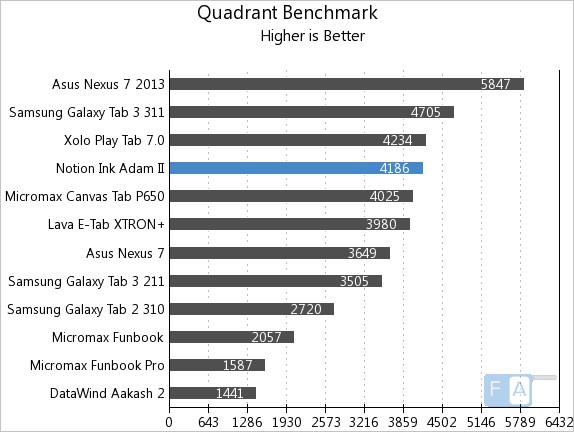
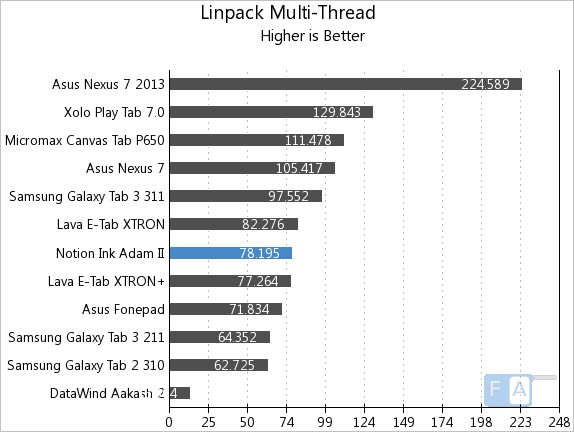

Take a look at the complete set of benchmark results here.
As you can see from some of the charts above, the CPU tests like Linpack show how underpowered the CPU is, while the more GPU-focused tests like Quadrant show you how powerful the GPU is. We tried a bit of gaming too on this tablet, which is not great if held in the hand due to the uncomfortable edges but the device does perform really well thanks to the quad core Mail 400 MP GPU. We will update you with gaming videos in a while here, check back in a few days.
Again, like we mentioned earlier, the findings from the benchmarks translated to day to day performance as we saw repeated slow downs both due to the CPU as well as the insufficient 1 GB of RAM, which easily fills up for even a bit of multi tasking. Yes, the 1 GB of DDR3 RAM easily fills up and has about 500 MB free on idle. It completely chokes the device when a process like installing apps is running in the parallel, so much that the device completely comes to a standstill. The touch response too is not something to boast about here, there were a lot of mistouches and long delays of action.
However, the videos and games play well on this device, which is a good sign that the GPU is powerful. But overall experience, if you ask us, is just average and sometimes really frustrating due to the single tasking nature of performance. We really hope Notion Ink optimize the hardware for better performance in a firmware update or two.
The storage on the Notion Ink adam II is pegged at 8GB with around 6.30 GB available for the user, which is aplenty if you are looking at installing some games and watching a couple of movies. You can also install apps and games on the SD card, which makes life easier for people wanting to install a ton of games or watch a lot of videos with a roaming collection on the card.
Other Hardware
Other interesting hardware parts of the Adam II include the stereo loud speakers, the cameras and the spine display. As mentioned earlier, the spine display is a way to get at a glance information and is actually a two piece 100×5 STN LCD panel, which works even when the device is in standby. The stereo speakers are surprisingly true stereo and you can notice the difference between two channels when listening in landscape. The 3.15 MP BSI cameras on both the front and back are great for video calling but we wouldn’t suggest using it for taking pictures.
The tablet also comes with a ton of connectivity options, like WiFi, 3G in the mobile variant, micro SD expansion up to 32 GB and finally the much needed USB OTG micro USB slot which is great for a big tablet. We got the PS3 controller to work with games on this tablet, and other accessories like a keyboard and mouse or even flash drives work great. The SIM slot is a full sized SIM slot and we found it hard to use it to pop in a SIM, but otherwise data worked just fine but of course you cannot make calls.
Software
Coming to software, the tablet runs pure AOSP Android 4.2.2 out of the box. It’s completely stripped of any major modifications and only includes small tweaks like a screenshot button for the nav layout and a secondary display option for small modifications. The UI too gains some small tweaks for better landscape usage like a notification and status bar at the bottom along with navigation shortcuts on the screen. The default media players can play most formats of music and video, and we were surprised to see 1080p videos running flawlessly on this device, even 60 fps ones. Proves the GPU muscle inside. The custom video player also lets us have a pop up overlay on the screen which we can resize and watch besides doing other things. We found this to work really well.
Otherwise, there is not much to say about the software additions. Here are some screenshots of the UI in case you are wondering –
Running on Android 4.2.2, the the device comes with lock screen widgets and day dream options just like what you see on Nexus devices. All the Google apps are pre-installed but you can obviously install anything you want from the play store too. That said, we still feel Android on a 10.1 inch tablet is not ideal. Sure there are a lot of tablet optimized apps available now, but that doesn’t change the fact that default UI is hard to use in landscape, with a centered app list button and even the app list. Also, popular apps like Twitter still are tablet-exclusive to Samsung devices and what we get here is just a stretched mobile app. The situation is improving by the day, but we would like to see it match the iPad soon, may be someday.
Battery Life
The Notion Ink Adam II comes with a whoppingly huge 6000 mAH Lithium ion battery. Like most tablets the battery lasts for a long while even if you are using it regularly. However, we had found some anomalies, as the battery kept draining in standby, more so than while in use. We had kept the device in idle for a couple of days only to find the battery completely depleted and hence taking a long time to boot. It happened more than once for us but sometimes it idled very well, however we haven’t been able to find the exact reason why. Technically the battery life should be excellent with a massive capacity but weirdly enough, we faced drains that are uncharacteristic. It might be an isolated issue, we should warn you, but we will let you know if that changes. Also, due to a large capacity, we needed to make sure we use the in-box charger to get it charged faster than usual with the other chargers we had lying around.
Conclusion
In the end we find two main problems with the Notion Ink Adam II. The form factor is too big for ideal textbook like usage, especially with a low resolution 1280×800 screen at 10 inches. We would definitely like a smaller 8 inch form factor with a slightly better screen and the same resolution, which works better for that screen size. Next is performance. We found it too hard to give it a pass as it constantly became non-performing over the course of usage. If Notion Ink can fix these two problems and retain the beautiful design and build, they will have a customer in me. But if you are still in the market for a really cheap 10 inch tablet that now sells for a holiday discount of just 13,999 the Notion Ink might not just be the right fit, it might even surprise you with the build quality, go for it in that case.
Pros
- Great design and build quality
- Good loudspeakers
- Stock Android with no bloat
- Powerful GPU performance, can play videos flawlessly
- Stocked with connectivity options including HDMI out and USB OTG
Cons
- Average display with low resolution and pixel density
- CPU and RAM are bottlenecks for general use, hampers the experience
- Form factor might not be ideal for the design
Update: Mistakenly listed a pro as a con, apologies!


